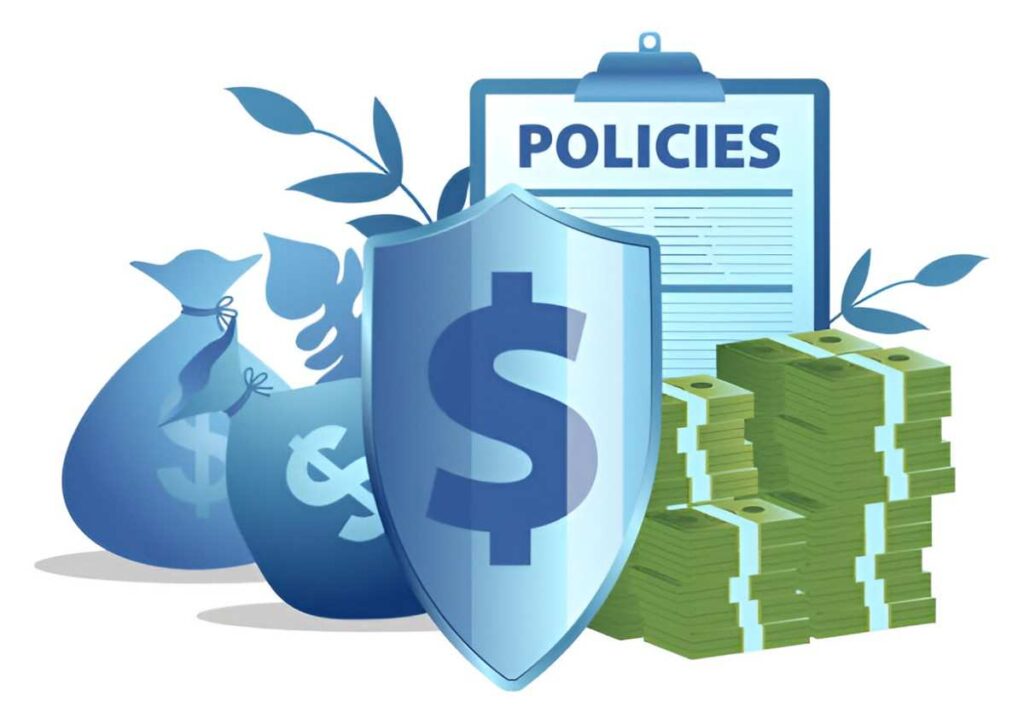In today’s increasingly volatile climate landscape, businesses face unprecedented financial exposure to weather-related risks. As someone who has advised numerous clients on risk management strategies, I’ve witnessed firsthand how unexpected weather events can devastate a company’s financial health. Weather insurance has emerged as a sophisticated financial instrument that allows organizations to transfer specific weather-related risks to insurers, providing protection against the unpredictable forces of nature.
Table of Contents
Understanding Weather Insurance and Parametric Coverage
Weather insurance differs fundamentally from traditional property and casualty insurance. While traditional insurance covers physical damage from weather events, weather insurance compensates policyholders when specific, predefined weather conditions occur—regardless of whether physical damage results.
This approach, known as parametric insurance, relies on objective measurements rather than actual losses. I find this distinction crucial because it eliminates lengthy claims investigations and provides rapid payouts based solely on weather data from agreed-upon measurement stations.
The Mechanics of Weather Insurance
At its core, weather insurance works through triggers—specific weather conditions that, when met or exceeded, activate policy payouts. These triggers can include:
- Temperature thresholds (maximum, minimum, or average)
- Precipitation levels (rainfall, snowfall)
- Wind speed measurements
- Sunlight hours or solar radiation
- Combined indices of multiple conditions
The payout structure follows a predetermined formula, often calculated as:
Payout = Tick Size \times (Measured Value - Trigger Level)Where the tick size represents the monetary value assigned to each unit of deviation from the trigger.
For example, a ski resort might purchase insurance with the following parameters:
- Trigger: Less than 100 inches of seasonal snowfall
- Tick size: $10,000 per inch below trigger
- Maximum payout: $500,000
If only 75 inches of snow falls during the season, the payout calculation would be:
Payout = $10,000 , times (100 - 75) = $250,000Industries Most Vulnerable to Weather Volatility
In my work with diverse sectors, I’ve identified several industries particularly exposed to weather-related financial risks:
Agriculture
Farmers face constant exposure to weather variability. A cold snap during planting season or excessive rainfall during harvest can significantly impact yields and revenue. I’ve worked with corn producers who use growing degree day (GDD) insurance to protect against insufficient heat units during critical growth phases.
GDD is calculated as:
GDD = \frac{T_{max} + T_{min}}{2} - T_{base}Where:
- T_{max} = Maximum daily temperature (capped at 86°F for corn)
- T_{min} = Minimum daily temperature (with a floor of 50°F for corn)
- T_{base} = Base temperature (50°F for corn)
When cumulative GDD falls below expected levels, farmers receive compensation proportional to the shortfall.
Energy
Energy companies face dual exposure to weather risks—both on supply and demand sides. Hydroelectric generators rely on sufficient rainfall, while wind farms depend on consistent wind speeds. On the demand side, utilities must manage load fluctuations driven by temperature extremes.
I recently helped a utility company structure a temperature-based hedge using heating degree days (HDD) and cooling degree days (CDD):
HDD = max(65°F - T_{avg}, 0) CDD = max(T_{avg} - 65°F, 0)The company received compensation when winter HDDs exceeded historical averages (indicating higher heating demand and costs) and when summer CDDs fell below averages (indicating lower cooling demand and reduced revenue).
Construction
Weather delays represent a significant financial risk in construction. Rain, extreme temperatures, and high winds can halt work, extending project timelines and increasing costs. Construction companies can use precipitation day insurance, which pays a fixed amount for each day that rainfall exceeds a specified threshold, helping offset idle labor and equipment costs.
Retail
Weather influences consumer shopping patterns dramatically. Extended cold or rainy periods can reduce foot traffic to stores, while unseasonably warm winter weather can devastate seasonal merchandise sales. I’ve worked with clothing retailers who use weather insurance to protect against warm winter seasons that reduce demand for high-margin items like coats and boots.
Tourism and Hospitality
Weather-dependent attractions—ski resorts, beach destinations, golf courses—rely heavily on favorable conditions. A rainy summer season can devastate a beach resort’s revenue, while a warm, snowless winter threatens ski resort profitability.
Pricing Weather Insurance Products
Weather insurance pricing involves sophisticated statistical analysis of historical weather data and climate projections. The basic pricing model calculates expected loss as:
Premium = E(Loss) + Risk , Margin + ExpensesWhere:
- E(Loss) = Probability-weighted average of potential payouts
- Risk , Margin = Additional charge reflecting uncertainty and potential volatility
- Expenses = Administrative costs, profit margin, and reinsurance costs
The expected loss calculation requires estimating the probability distribution of the relevant weather variable. For temperature-based contracts, a normal distribution often provides a reasonable approximation:
E(Loss) = \int_{a}^{b} f(x) \times Payout(x) , dxWhere:
- f(x) = Probability density function of the weather variable
- Payout(x) = Payout function based on the contract terms
- a, b = Integration bounds based on possible weather outcomes
Climate Change Implications for Weather Insurance
Climate change presents significant challenges for weather insurance markets. Historical data becomes less predictive of future conditions as climate patterns shift, introducing additional uncertainty into pricing models. I’ve observed three primary approaches to addressing this challenge:
- Shorter contract terms: Limiting exposure to 1-2 seasons rather than multi-year policies
- Climate adjustment factors: Modifying historical distributions to reflect expected climate trends
- Dynamic pricing models: Continuously updating premiums based on emerging climate data
The adjusted pricing model incorporating climate change might take the form:
Premium = E(Loss_{historical} \times Climate , Adjustment , Factor) + Risk , Margin + ExpensesWhere the climate adjustment factor reflects expected changes in the probability distribution of the relevant weather parameter.
Weather Derivatives vs. Traditional Insurance
Weather derivatives represent an alternative to insurance policies for managing weather risk. These financial instruments trade on exchanges or in over-the-counter markets, offering some advantages over traditional insurance products.
Key differences include:
| Feature | Weather Insurance | Weather Derivatives |
|---|---|---|
| Regulation | Insurance regulations | Securities regulations |
| Counterparty | Insurance company | Various financial entities |
| Basis for purchase | Must demonstrate insurable interest | No insurable interest required |
| Customization | Highly customizable | More standardized |
| Settlement | Direct with insurer | Through financial markets |
| Tax treatment | Insurance expense | Financial instrument |
I typically recommend derivatives for larger companies with sophisticated treasury operations, while insurance products often better serve small to mid-sized businesses with specific weather exposures.
Case Study: Weather Risk Management for a Winery
A client of mine operates a premium winery in California’s Napa Valley. The business faces multiple weather risks:
- Spring frost that can damage emerging buds
- Excessive summer heat that stresses vines
- Harvest-season rainfall that can promote rot and dilute flavors
We structured a comprehensive weather insurance program addressing each risk:
Frost Protection
- Coverage period: March 15 – May 15
- Trigger: Minimum temperature below 28°F at the vineyard weather station
- Payout: $5,000 per frost day
- Limit: $100,000
Heat Stress Protection
- Coverage period: June 1 – August 31
- Trigger: More than 15 days with maximum temperature above 95°F
- Payout: $10,000 per day exceeding threshold
- Limit: $300,000
Harvest Rainfall Protection
- Coverage period: September 1 – October 31
- Trigger: Total rainfall exceeding 2 inches
- Payout: $50,000 per inch above threshold
- Limit: $250,000
The total premium for this program was $175,000, representing approximately 3% of the winery’s annual revenue—a reasonable cost to protect against weather events that could otherwise cause catastrophic losses.
Weather Data Sources and Quality
The reliability of weather insurance depends critically on accurate, impartial weather data. Common data sources include:
- Government meteorological services (NOAA, Met Office)
- Commercial weather data providers
- Custom weather stations at insured locations
- Satellite-based measurements
- Radar and remote sensing technologies
When advising clients, I emphasize the importance of selecting appropriate weather stations. The ideal station should:
- Have a long, consistent historical record (20+ years)
- Be professionally maintained with regular calibration
- Be located close to the insured property
- Have minimal urban development or environmental changes in its vicinity
For large geographical exposures, a weighted basket of multiple stations can provide more representative coverage:
Index = \sum_{i=1}^{n} w_i \times Parameter_iWhere:
- w_i = Weight assigned to station i
- Parameter_i = Weather measurement at station i
- n = Number of stations in the basket
Quantifying Weather Exposure: The Weather Sensitivity Analysis
Before recommending specific weather insurance solutions, I conduct a weather sensitivity analysis to quantify the relationship between weather variables and financial performance. This analysis typically follows these steps:
- Data collection: Gather historical financial data and corresponding weather records
- Correlation analysis: Identify statistically significant relationships between weather variables and financial metrics
- Regression modeling: Develop mathematical models quantifying these relationships
- Sensitivity testing: Estimate financial impact across different weather scenarios
A simple linear regression model might take the form:
Revenue = \beta_0 + \beta_1 \times Temperature + \beta_2 \times Precipitation + \epsilonMore sophisticated models might incorporate non-linear relationships, interaction terms, and time lags to capture complex weather-revenue dynamics.
Once the relationship is established, we can calculate the Value at Risk (VaR) due to adverse weather:
Weather , VaR_{\alpha} = F^{-1}_L(\alpha)Where:
- F^{-1}_L = Inverse cumulative distribution function of the loss distribution
- \alpha = Confidence level (typically 95% or 99%)
This figure represents the maximum weather-related loss expected at the specified confidence level, providing a basis for determining appropriate insurance coverage limits.
Basis Risk in Weather Insurance
One challenge I consistently address with clients is basis risk—the potential mismatch between actual financial losses and insurance payouts. This risk stems from several sources:
- Geographic basis risk: Weather conditions at the measurement station differ from those at the insured location
- Product basis risk: The selected weather parameter imperfectly correlates with financial outcomes
- Temporal basis risk: The coverage period doesn’t exactly match the time of weather sensitivity
To minimize basis risk, I recommend:
- Choosing weather parameters with the strongest correlation to financial performance
- Using the closest reliable weather station or a weighted basket of stations
- Customizing coverage periods to match specific risk exposures
- Considering compound triggers that better reflect complex weather-business relationships
The Future of Weather Insurance: Technology and Innovation
The weather insurance market continues to evolve, driven by technological advancements and growing awareness of climate risks. I’m particularly excited about these emerging trends:
Satellite and Remote Sensing Integration
Satellite-based measurements are revolutionizing weather insurance by providing high-resolution data for areas lacking ground-based stations. This technology proves especially valuable in developing regions where traditional weather infrastructure remains limited.
Blockchain and Smart Contracts
Smart contracts on blockchain platforms can automate weather insurance payouts, reducing administrative costs and accelerating claims settlement. Once weather data reaches predetermined thresholds, payment occurs automatically without human intervention.
Artificial Intelligence and Machine Learning
AI models improve weather risk pricing by identifying complex patterns in historical data and generating more accurate forecasts. These models can capture non-linear relationships between multiple weather variables and their financial impacts.
Microinsurance and Parametric Products for Small Businesses
Simplified, low-cost weather insurance products increasingly serve small businesses previously excluded from traditional coverage due to high minimum premiums. These products feature standardized terms and streamlined distribution channels, making weather protection accessible to a broader market segment.
Conclusion: Strategic Implementation of Weather Risk Management
Weather insurance represents a powerful tool for financial risk management in an increasingly volatile climate. As businesses face growing weather-related uncertainties, I believe proactive weather risk management will become standard practice across industries.
When implementing a weather risk management strategy, I recommend following these steps:
- Identify specific weather sensitivities through quantitative analysis
- Determine appropriate risk retention thresholds based on financial capacity
- Design customized coverage addressing the most significant exposures
- Balance premium costs against potential loss scenarios
- Integrate weather protection with broader risk management strategies
With climate variability projected to increase, businesses that strategically manage weather risks gain significant competitive advantages—maintaining more stable financial performance, improving investor confidence, and ensuring operational resilience during adverse conditions.





